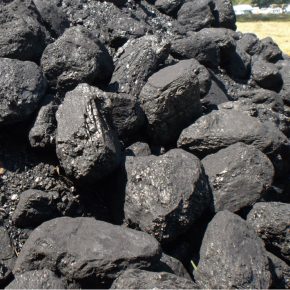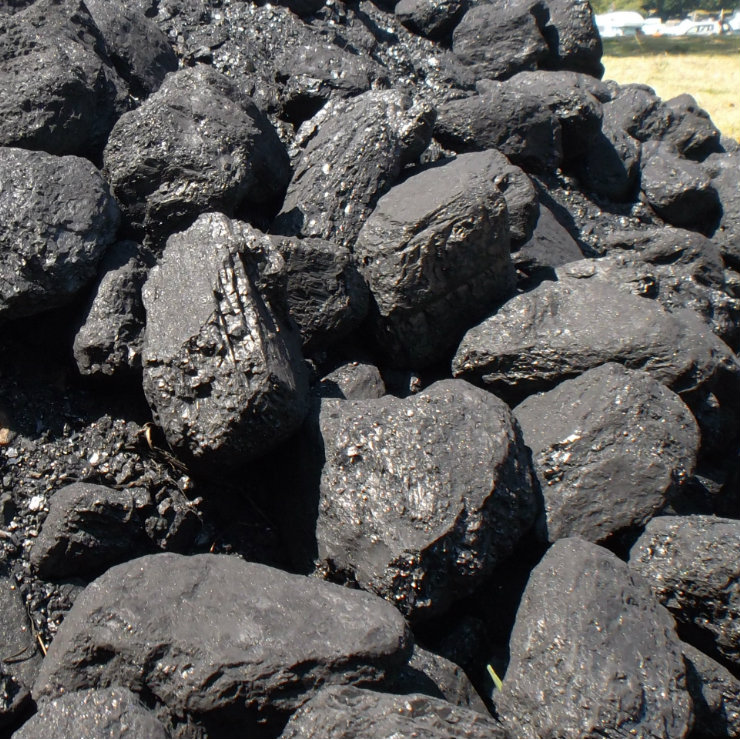
(oatsy40, CC BY)
When looking at individual sectors of the Russian economy, it becomes obvious that some of them have done surprisingly well. This applies particularly to most exporters who largely profited from the weak RUB with extractive industries dominating the ranking. The aggregate net profit of those industries was up 17,9 per cent. However, even among the largely profitable extractive Russian industries, there was one that stood above them – the coal industry. Russian corporations involved in coal mining, and other related sectors, grew by a staggering 68 per cent y/y, according to the report.
The Russian coal exports rose 13 per cent last year to a record 185,5 million tons worth USD13,5bn. This is the highest number since the creation of nowadays Russia. The growing exports reflect increased rail and port capacity at Russia’s both European and Asian coal terminals. At the same time, there is a strong demand for coal imports from both European and Asian buyers. With the unprecedented growth levels, Russia is now the third world’s largest coal exporter, surpassed only by Indonesia and Australia.
Beijing in need of coal
The growing demand for coal has been pushing the prices up. Since the beginning of 2016, the price has increased twofold, from USD50 to USD100/ton. A major role in that process played the recent reforms carried out in the world’s largest coal user and importer – China. The Chinese government has been on a mission to improve its air pollution levels and upgrade its fossil-fuel dominant energy structure by cutting coal consumption and boosting clean energy use.
Apart from Beijing’s environmental concerns, the drive behind the reforms, initiated in 2016, has been the need to restructure China’s outdated coal industry. Small and largely uncompetitive coal companies are being shut down all over the country.
The plan aims to completely eliminate, or, at least, halt a total of 109 GW of coal-fired power capacity by the end of this decade and simultaneously keep its total installed coal-fired power capacity below 1,100 GW. For 2017, the plan was to decommission or suspend 50 GW, which the government exceeded by 15 GW (65 GW in total), according to a State Council announcement reported by Reuters. As of 2017, however, coal still remained the largest source of energy in China at just over 60 per cent of its energy mix, though that has decreased from 80 per cent in 2010.
The consumption of coal in China has been decreasing steadily since 2013. However, 2017 was a departure from this trend, seeing a rise of 0,4 per cent, according to statistics released by the National Bureau of Statistics reported by the Financial Times. According to the FT report, the unexpected increase in Chinese coal consumption was caused by a 5,7 per cent y/y increase in electricity demand due to a short term increase in heavy construction activity designed to boost the economy just before the October national congress in 2017. At the same time, last year saw hydropower productivity, which has been able to satisfy energy demand in recent years, drop by 40 per cent.
Swapping import partners
Given the already mentioned capacity cuts in its domestic mining sector, China had to bridge its coal demand through coal imports. The primary benefactors of the surprising upsurge in China’s coal demand were Russia, Mongolia and Australia. According to data from China’s General Administration of Customs, arrivals from Russia in 2017 surged 36,3 per cent from 2016 to 25,3 million tons. The corresponding numbers for Mongolia and Australia were 27,6 per cent and 13,4 per cent, respectively.
Apart from the China’s growing demand, the three countries largely benefited from China’s ban on coal imports from North Korea introduced in late February last year. In 2016, China imported more than 20 million tons of coal from North Korean, making it its fourth largest coal provider after Australia, Indonesia and Mongolia, a position North Korea quickly lost after the ban had taken effect.
“The majority of suddenly available market share was grabbed by Russia, as mining costs in Russia are cheaper than in China’s northeast region,” said to South China Morning Post Cheng Gong, an analyst at the China National Coal Association.
In 2016, Russia’s five largest companies accounted for 78.8 per cent (223.3 million tons) of all coal production in the country, according to the Russian Fuel an Energy Complex report from 2017. Most of that coal (171,4 million tons) was exported to foreign markets. Exports to China, however, constituted only a smart part – 11 per cent. This is due to the fact that energy conglomerates like Evraz, a multinational steel making and mining company, headquartered in London, focus primarily on other markets, mostly Japan and South Korea. Another Russian energy giant, Mechel, exports around 30 per cent of its coal to China.
Even those companies profited greatly from the recent upsurge in exports to China and the subsequent increase in prices of the commodity so abundant in the Russian soil. The energy giant Evraz, listed on London Stock Exchange, saw its shares double in value in 2017 alone, a steady growth which so far hasn’t showed any signs of stopping. Similarly, the Moscow traded Mechel has seen its shares triple in value since 2016.
Infrastructure is the key
The growing demand from China was an incentive Russia used to develop new coal production centers in the Far East of the country to further boost its energy production. More importantly, the Russian government is currently focused on improving the existing infrastructure connecting the coal production facilities, located mostly in the south, with the ports in Russia’s Far East.
In order to make the whole process, starting with mining and finishing with loading the ready-to-use-coal on cargo ships, more efficient, Russia is working on improving its key railway infrastructure, namely the Baikal-Amur Mainline and the more internationally recognized Trans-Siberian Railway Network. These two railway networks have made Russia’s coal expansion to the markets in Asia-Pacific region possible. But now, after decades of a complete lack of any maintenance, both railway networks are in desperate need of some serious revamping.
The government plan is to increase the throughput of both key railway networks six fold (to 180 million tons), in six years. According to a recent statement made by Russian President Vladimir Putin, cargo containers will be delivered from Vladivostok to the western Russian border in just seven days. According to an estimate made last year by the Russian Railways State Corporation, the final price of the project will be somewhere between RUB500-650bn.
Also private companies operating ports in Russia’s Far East are building new facilities to be able to service the rising demand for Russian coal. An example is the construction of the third generation of a “specialized coal complex” by Vostochny Port, an intermodal container port located at the eastern end of the Trans-Siberian Railway. With an investment of RUB32bn, it is the largest investment project in Russia’s Far East. The new terminal, with full operational capacity, will be opened in 2020, and it will increase the port’s cargo turnover by 20 million tons to 40/45 million tons of coal per year. The project is intended to increase Russia’s coal export potential to meet the growing demand from countries of the Asia-Pacific region.
Filip Brokeš is an analyst and a journalist specializing in international relations.


